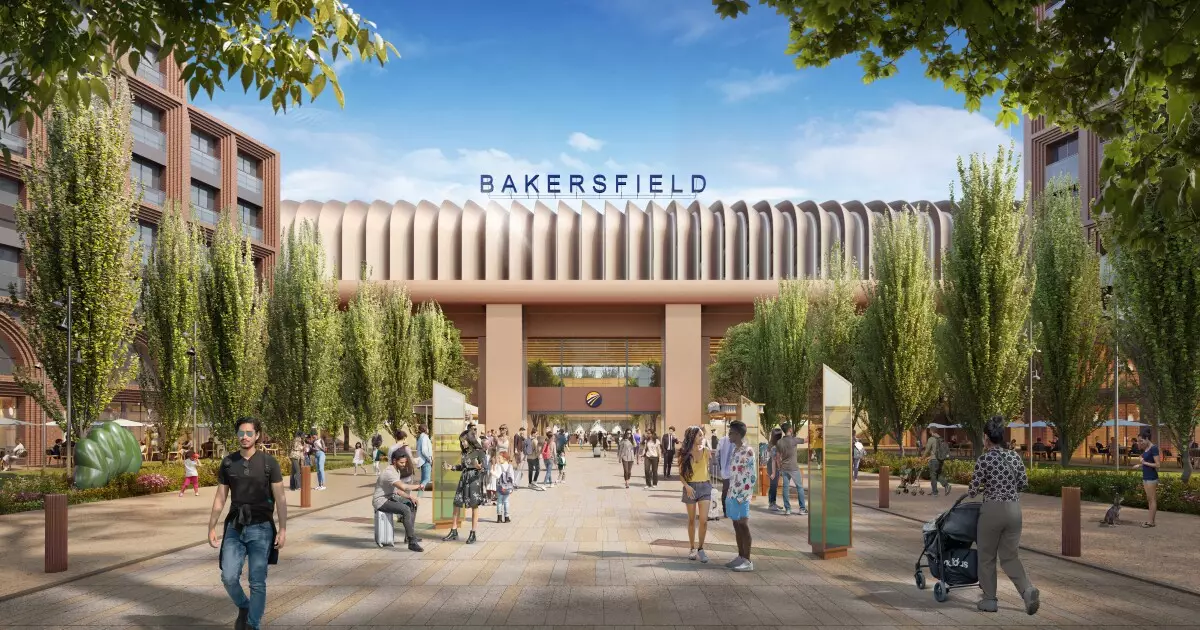California’s ambitious high-speed rail project, once touted as the crown jewel of public transportation, now finds itself in a precarious position, with a staggering $7 billion funding shortfall. This deficiency threatens the completion of the Central Valley segment and raises red flags about the entire initiative’s viability. Detractors, including former President Trump and various state lawmakers, have voiced strong opposition, arguing that the project is emblematic of government mismanagement and fiscal irresponsibility.
The Budgetary Black Hole
The root of the crisis can be traced to the ballooning costs associated with the high-speed rail project. Originally estimated at $34 billion in 2008, projections have now escalated to between $100 billion and $128 billion. This exponential increase isn’t merely an accounting anomaly; it reflects deeper systemic issues in cost management and planning that plague public infrastructure projects. Helen Kerstein, a principal analyst at the Legislative Analyst Office, insists that the High-Speed Rail Authority lacks a concrete strategy to fill the gaping budget hole. The situation looks dire, especially with inflation potentially exacerbating the fiscal landscape.
To further complicate matters, the project faces looming deadlines. By June 2026, the High-Speed Rail Authority must address the $7 billion shortfall or risk halting construction, effectively writing off years of taxpayer investment and planning. The absence of a detailed plan to tackle this financial quagmire provokes legitimate fears among taxpayers and lawmakers that the gap could widen. This mismanagement raises questions about whether state resources should be redirected to more pressing needs, like wildfire prevention or essential water infrastructure, as suggested by Assemblymember Alexandra Macedo.
The Political Battleground
The political ramifications of California’s high-speed rail project cannot be understated. The current administration has demonstrated a willingness to reallocate funding amidst concerns about the rail project’s management. In January, Assembly Bill 267 was introduced to divert $1 billion in cap-and-trade funds from the rail project to more immediately beneficial projects. Critics, like Macedo, argue that the ongoing struggles of the high-speed rail project should prompt Governor Gavin Newsom to prioritize real infrastructural needs over a venture that many believe is “over budget and behind schedule.”
This sentiment resonates across the political spectrum, drawing fire from a coalition of federal and state voices. Once seemingly untouchable, the high-speed rail project now finds itself under scrutiny, and its future hanging in the balance. As President Trump has argued, it raises the critical question of whether the government can manage such ambitious initiatives efficiently.
Public Disappointments and Distrust
The sense of betrayal felt by voters stems from the initial promises made by proponents of the project. Many Californians believed that they were investing in a solution that would revolutionize transportation across the state. However, as Assemblymember Macedo passionately claims, “Voters have been hoodwinked by the High-Speed Rail Authority’s smoke and mirrors.” This sentiment echoes a broader disillusionment with government projects perceived as mired in inefficiency and lack of transparency.
As taxpayers watch their dollars drain into a project marred by mismanagement, skepticism has grown. While public-private partnerships are now being explored under the leadership of new CEO Ian Choudri, transitioning from a government-controlled endeavor to a collaborative model raises its own set of concerns regarding accountability and profit motives. It’s unclear whether such partnerships can restore public trust in a project that has already squandered so much.
Lessons to Be Learned
The high-speed rail debacle serves as a stark reminder of the pitfalls associated with grand public infrastructure initiatives that lack robust governance and fiscal discipline. For Californians and policymakers alike, this ongoing saga provides invaluable lessons about setting realistic budgets, ensuring transparent project management, and prioritizing the needs of citizens. As the political landscape evolves, the future of high-speed rail hinges not only on funding but also on regaining public confidence that such monumental projects can deliver on their promises without further straining taxpayer resources.
In a state where innovation and progress are celebrated, the continuing plight of the high-speed rail project constitutes a tragic reminder that monumental aspirations must be paired with sound financial strategy and genuine accountability. The stakes are high, and the outcome is uncertain.

